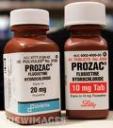 Commentary by Arthur Sinkman MD, NYU Department of Psychiatry
Commentary by Arthur Sinkman MD, NYU Department of Psychiatry
Three years ago the FDA began requiring that all selective serotonin reuptake inhibitors (SSRIs) carry a black-box warning stating that their use in children and adolescents is associated with an increase in risk for suicidal thinking, feelings and behavior. Recently the FDA ordered that this warning be extended to include treatment for young adults aged 18 to 24.
The 2004 order had a dramatic impact on the treatment of depression in children. The use of SSRIs dropped precipitously, and the overall diagnosis and treatment of pediatric depression also decreased. Clearly physicians and families had been scared away from treating depression. A subsequent increase in the rate of pediatric suicide has been observed.
The FDA’s action was controversial from the start, with several well-conducted studies coming to the opposite conclusion: that SSRIs prevent suicide rather than cause it. The latest research in this burgeoning controversy is a recent group of studies published in the American Journal of Psychiatry.
The first report examined a very large series of cases from a pre-paid health plan and evaluated the rate of suicide attempts both before and after the initiation of treatment.(1) It was found that suicide attempts were highest in the month prior to the start of treatment, second highest in the month after treatment was begun and steadily decreased thereafter. The same pattern held for other treatment modalities, both pharmacologic and nonpharmacologic. The authors concluded that suicidality after starting medication was part of the pattern of the illness and not a direct result of the treatment.
Another study examined an enormous database of the treatment of depression of a quarter of a million veterans(2). It showed that the rate of suicide was much lower in the group that took SSRIs in comparison to those who did not take medication. The suicide rate was also lower in the SSRI group than in the group that took other types of antidepressants. In addition, this study also repeated the findings of the aforementioned study in that the incidence of suicide was higher before treatment than after.
The editorial accompanying the above reports concluded that “it is more likely that suicidal behavior leads to treatment than that treatment leads to suicidal behavior.”(3)It should be noted that these studies mainly focused on adults; thus, the relevance for the treatment of pediatric depression is less clear. However, the VA study did include young adults and its findings are relevant for the newest group of patients to be included in the black-box warning.
A follow-up report in the same journal added further ammunition to those opposed to the black-box warning.(4) It was done by the same research group responsible for the VA report. This study analyzed the prescription rates of SSRI antidepressants and the rates of suicide both before and after the black-box warning. Data from both the U.S. and the Netherlands was examined. A clear correlation between the decreased prescriptions and increased death by suicide was observed. It was also noted that various limitations in the meta-analysis that the FDA used as the basis for its warning exist. Most telling is that there were no completed suicides in this meta-analysis. Rather, there was an increase in the rate of suicide ideation and gestures.
What conclusions can be drawn? One is that withholding an effective treatment is a decision that may have devastating consequences. Although there is a question about the danger of antidepressants, the risks associated with not treating depression are well known and not open to question. The other conclusion is that the use of SSRIs may be far less dangerous than the FDA’s black-box warning implies. Nevertheless, some caution is indicated, particularly when treating children. Prudent behavior includes close follow-up after initiating treatment, considerations for referral for other treatments aside from medication, and evaluation for the presence of side effects, including akathisia, the unpleasant subjective sensation of inner restlessness. Akathisia is usually associated with the use of neuroleptics such as Haldoperidol, but it not infrequently occurs with SSRIs and is often missed. Akathisia can lead to great discomfort and possible suicidal thinking and behavior.
References
1. Simon GE and Savarino J. Suicide attempts among patients starting depression treatment with medications or psychotherapy. Am J Psychiatry. 2007;164:1029-1034.
2. Gibbons RD, Brown CH, et al. Relationship between antidepressants and suicide attempts: an analysis of the Veterans Health Administration data sets. Am J Psychiatry. 2007;164:1044-1049.
3. Brent D. Antidepressants and suicidal behavior: cause or cure? Am J Psychiatry. 2007;164:989-991.
4. Gibbons RD, Brown CH, et al: Early evidence on the effects of the regulators’ suicidality warnings on the SSRI prescriptions and suicide in children and adolescents. Am J Psychiatry. 2007;164:1356-1363.

One comment on “SSRIs: Do They Increase Rates of Suicide?”
Well according to here, it states… “There was no statistical difference in crude suicide rates among patients assigned to SSRIs, other antidepressants, or placebo ({chi}2=2.83, df=2, p>0.05). In addition, when groups were compared on the basis of patient exposure years, there was no statistical difference in suicide rate among patients assigned to SSRIs, other antidepressants, or placebo”. Obviously that is not the only answer and if you look hard enough you could find proof otherwise i am sure. In my opinion, the risk is not treating the issue rather then being too scared and living with the condition. Judy writes for here
Comments are closed.